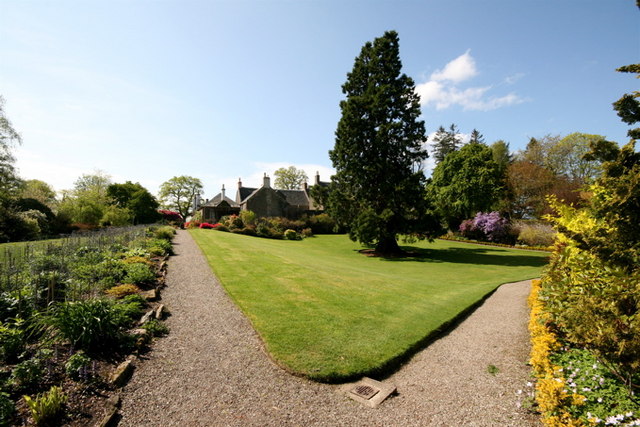Geilston Garden on:
[Wikipedia]
[Google]
[Amazon]

 Geilston Garden is a property of the
Geilston Garden is a property of the
Video footage of the Geils Marriage WellGeilston Garden page on NTS website
National Trust for Scotland properties Gardens in Argyll and Bute {{UK-garden-stub

 Geilston Garden is a property of the
Geilston Garden is a property of the National Trust for Scotland
The National Trust for Scotland for Places of Historic Interest or Natural Beauty, commonly known as the National Trust for Scotland ( gd, Urras Nàiseanta na h-Alba), is a Scottish conservation organisation. It is the largest membership organi ...
, north-west of Cardross
Cardross (Scottish Gaelic: ''Càrdainn Ros'') is a large village with a population of 2,194 (2011) in Scotland, on the north side of the Firth of Clyde, situated halfway between Dumbarton and Helensburgh. Cardross is in the historic geographical ...
, Argyll and Bute
Argyll and Bute ( sco, Argyll an Buit; gd, Earra-Ghàidheal agus Bòd, ) is one of 32 unitary authority council areas in Scotland and a lieutenancy area. The current lord-lieutenant for Argyll and Bute is Jane Margaret MacLeod (14 July 2020) ...
.
Geilston Garden was developed more than two hundred years ago with a date given for its development being 1797, combining several features (traditional walled garden, kitchen garden, wooded area). The walled garden has a dominating 100-foot Wellingtonia (''Sequoiadendron giganteum
''Sequoiadendron giganteum'' (giant sequoia; also known as giant redwood, Sierra redwood, Sierran redwood, California big tree, Wellingtonia or simply big treea nickname also used by John Muir) is the sole living species in the genus '' Sequoiad ...
'') in the centre of the lawn. The Geilston burn wends its way through the north of the estate towards the River Clyde in Cardross. The origins of the garden were most likely a result of the 1770 Montgomery Act, which saw the land around the house enclosed and planting undertaken.
Geilston was opened to the public with the death of the last resident, Margaret Bell, who was a friend of Elizabeth Hendry, the owner of Geilston who bequeathed the house to the National trust for Scotland and gave her friend life rent of the house. The Hendrys moved into Geilston as tenants but the family bought the house from the Geils in 1922.Truscott, J. and Palmer, H. (1988). Private gardens of Scotland. New York: Harmony Books. p46 The garden as it appears today was mostly laid out by Elizabeth Hendry and Margaret Bell. A cannon within the garden is said to have been a trophy from the Battle of Corunna
The Battle of Corunna (or ''A Coruña'', ''La Corunna'', ''La Coruña'' or ''La Corogne''), in Spain known as Battle of Elviña, took place on 16 January 1809, when a French corps under Marshal of the Empire Jean de Dieu Soult attacked a Bri ...
brought to the Garden by Major General Geils, a previous owner of Geilston.
The kitchen garden is the most labour-intensive area. It springs to life in April with the first sowings of carrots, parsnips and beetroot closely followed by transplanted brassica
''Brassica'' () is a genus of plants in the cabbage and mustard family ( Brassicaceae). The members of the genus are informally known as cruciferous vegetables, cabbages, or mustard plants. Crops from this genus are sometimes called ''cole c ...
s. Visitors can buy in-season produce from a small stand at the garden's entrance.
The walled garden is the focus of spring colour with azaleas, heathers
''Heathers'' is a 1989 American black comedy film written by Daniel Waters and directed by Michael Lehmann, in both of their respective film debuts. The film stars Winona Ryder, Christian Slater, Shannen Doherty, Lisanne Falk, Kim Walker, and ...
and unusual shrubs such as ''Cornus kousa
''Cornus'' is a genus of about 30–60 species of woody plants in the family Cornaceae, commonly known as dogwoods, which can generally be distinguished by their blossoms, berries, and distinctive bark. Most are deciduous trees or shrub ...
'' 'Satomi'. Summer colour is provided by the spectacularly vigorous species in the long herbaceous border – Thalictrum
''Thalictrum'' () is a genus of 120-200 species of herbaceous perennial flowering plants in the buttercup family, Ranunculaceae, native mostly to temperate regions. Meadow-rue is a common name for plants in this genus.
''Thalictrum'' is a taxonom ...
, Filipendula
''Filipendula'' is a genus of 12 species of perennial herbaceous flowering plants in the family Rosaceae, native to the temperate regions of the Northern Hemisphere. Well-known species include meadowsweet ('' Filipendula ulmaria'') and dropwort ...
, Eupatorium
''Eupatorium'' is a genus of flowering plants in the family Asteraceae, containing from 36 to 60 species depending on the classification system. Most are herbaceous perennials growing to tall. A few are shrubs. The genus is native to temperat ...
, Helenium
''Helenium'' is a genus of annuals and herbaceous perennial plants in the family Asteraceae, native to the Americas.
They bear yellow or orange daisy-like composite flowers. A number of these species (particularly ''Helenium autumnale'') have ...
, Phlox
''Phlox'' (; Greek φλόξ "flame"; plural "phlox" or "phloxes", Greek φλόγες ''phlóges'') is a genus of 67 species of perennial and annual plants in the family Polemoniaceae. They are found mostly in North America (one in Siberia) in di ...
and Sidalcea
''Sidalcea'' is a genus (approx. 25 species) of the botanical family Malvaceae. It contains several species of flowering plants known generally as checkerblooms or checkermallows, or prairie mallows in the United Kingdom. They can be annuals or ...
dominate the display.
The garden is open from April to October daily. The adjacent Geilston House is not open to the public.
References
External links
Video footage of the Geils Marriage Well
National Trust for Scotland properties Gardens in Argyll and Bute {{UK-garden-stub